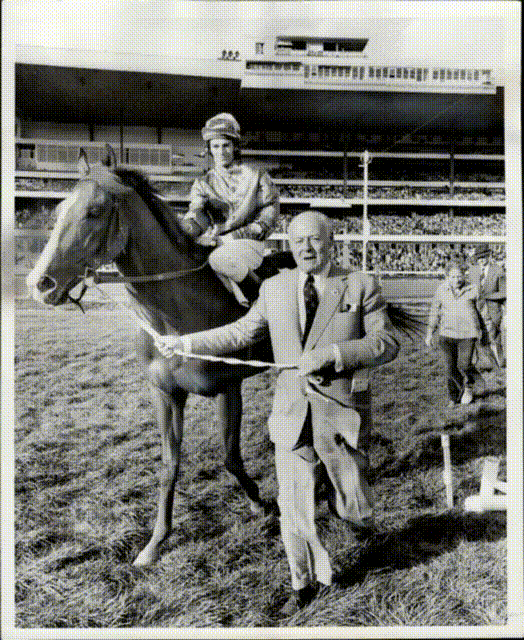
“
I like to create things
E. P. Taylor (1901-1989) was a “big booming man” with a jovial disposition and a talent for building companies that set him on a path to becoming one of Canada’s richest men. Yet, the seeking of riches was not the primary motivation: “People don't understand that the principal motivation is not money,” he once remarked. “There are people who like to paint or garden. I like to create things.”
Born in Ottawa, Taylor grew up wanting to emulate his grandfather on his mother’s side, Charles Magee. Magee was a successful entrepreneur who inspired and instructed the young Taylor with stories of his business deals.
As an engineering student at McGill University in 1918, Taylor invented a toaster that browned bread on both sides at the same time. After graduation, he set up a bus line to compete with a streetcar service between Ottawa and Westboro on its fringe. The venture was sold for a profit, and Taylor took to selling bonds and stocks (later underwriting them) at the investment firm where his father was a manager, while launching a taxi service equipped with newly invented taxi meters (again, later sold at a profit).
In 1923, the Magee family appointed Taylor to the board of directors at one of their companies, Brading Breweries Ltd. The Ottawa-based plant had survived a longstanding ban on buying beer in Ontario by selling to consumers in nearby Quebec, where Prohibition had not been adopted. But anti-temperance legislation was passed in Ontario on June 1, 1927, and in anticipation of this event, Taylor had completed an intensive study of the Brading plant and beer industry dynamics to successfully persuade the directors that they should borrow against assets to enhance capacity.
With the financial position of Brading Breweries on a strengthening trend in a fragmented industry (of mostly small breweries struggling with low rates of production), the board accepted in 1928 another Taylor proposal: to embark on a program of acquisitions and mergers. Many of the acquisitions required just an exchange of shares; for those requiring cash, Taylor obtained financing from trusts in England and stockbrokers in Scotland.
As the consolidation progressed, operations were rationalized by moving production to the most efficient plants and remunerative beer brands. By the 1940s, some 30 breweries had been brought into Taylor’s holding company, Brewing Corp. of Ontario (subsequently renamed Canadian Breweries Ltd.), making it for several decades one of the “Big Three” brewers in Canada (the other two being Molson and Labatt).
When the Second World War broke out, Taylor volunteered to assist the government with mobilizing Canadian forces. Soon after the war ended, he and partners formed an investment company, Argus Corp., to acquire controlling stakes in companies from industries that differed in some way (e.g. cyclical vs. non-cyclical). This vehicle was known as a conglomerate, a relatively new form of corporate organization that management gurus after the war advocated on the grounds that it would capture benefits that included smoothing the impact of business cycles, economies of scale and better access to financing.
Taylor created a “humanistic” blueprint for post-war suburban communities when Don Mills near Toronto was developed in the 1950s. In addition, his Windfields Farm became a world-renown breeder of thoroughbred race horses, winning 15 Queen’s Plate races and over 320 stakes races worldwide; Northern Dancer was the first Canadian-born horse to win the Kentucky Derby.
As a philanthropist, Taylor was known for supporting higher education by participating in alumni fundraising drives and donating land for schools and institutions such as Ontario Tech University. His principal residence, Windfields Estate was gifted to the Canadian Film Centre, a non-profit filmmaking school that was established in 1988 by Norman Jewison.
Taylor died in 1989 in the Bahamas, where he lived in a gated community which, of course, he had built.
Sources:
Richard Romer, E.P. Taylor, McClelland and Stewart Ltd., 1978
Terry Conway, “E. P. Taylor: Canadian Visionary,” The Sport, June 24, 2020
Wikipedia, E. P. Taylor
Wikipedia, Canadian Breweries

